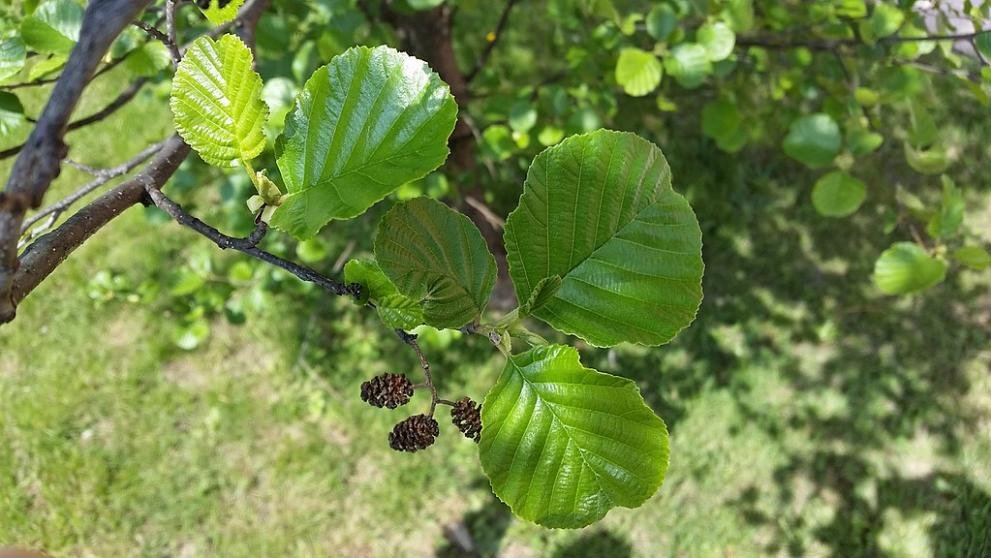Alnus glutinosa (L.) Gaertn.
French: aulne glutineux, aulne noir
German: Schwarz-Erle
Italian: ontano nero
Etymology of Latin species name: glutinosa = sticky, as the buds and young leaves are covered with a resinous gum
Where it grows
You’ll find black alder throughout most of Europe, from Scandinavia to the Mediterranean countries and eastward into the Caucasus and Ural Mountains. It normally grows below elevations of 1 000 m, although it occurs along watercourses up to 1 800 m in the mountains of central Europe. Alders are adapted to a wide range of temperatures, but require a fair amount of water to thrive. As their roots are well adapted to very wet soils, alders grow primarily on marshy waterlogged sites, on riverbanks and lake shores and on plateaus with high soil-moisture content.
What it looks like
At 10 to 25 m tall (and exceptionally 35-40 m), black alder is a relatively small tree species. It’s also short-lived for a tree, with individuals normally reaching 60 years, but can reach 160 years in some areas. Its dark green leaves are 4 to 10 cm long, and have a characteristic inward notch at the end. Flowers are clustered in grouped catkins that become visible in the autumn and mature in the following spring. The fruits are small woody cones, resembling small pine cones. They turn from green to dark-black in autumn, and remain hanging from the branches throughout winter. Wind helps the pollination, but the seeds spread mainly on water, protected by an oily water-resistant outer coat and a corky structure that helps them float.
Uses
The wood of the black alder is soft and porous, but durable if kept under water. It is used for jetties and underwater supports, bridge piles and small boats. It is fast-growing when young and can also be coppiced, providing material suitable for biomass production and high quality charcoal. This alder is a valuable pioneer species that is useful in land reclamation, flood control, the stabilisation of riverbanks and the functioning of river ecosystems. The black alder can improve soil fertility because its roots are able to fix nitrogen thanks to a symbiosis with the bacterium Frankia alni.
Did you know?
- The name black alder comes from the use of its tannin-rich bark to produce black dye.
- Under water, the wood is very durable; some of the wooden structures that Venice is built on are black alder trunks.
- Black alder is native to Europe, but is an invasive tree species in many countries outside Europe. In several continents, black alder colonises degraded wetlands, and river and lakeside habitats, out-competing native species.
- When the wood is cut, it turns from pale yellow to rust red. Because of this resemblance to bleeding, the plant was considered to be bad luck in ancient times.
Check out the European Atlas of Forest Tree Species. It has much more information about black alder and many other tree species in Europe's forests.

Distribution map of Black alder in Europe. Source: Caudullo et al. 2017 - CC-BY 4.0.

Male and female catkings in spring alongside old fruits that remained on plant through winter. © David Perez, Wikimedia - CC-BY 3.0

Leaves with characteristic downward notched margin at the apex. © Giovanni Caudullo, Wikimedia - CC-BY 4.0

Alder forest on marsh land in Spree, Germany. © Paul Schulze, Flickr - CC-BY 2.0

Freshly sawn wood of black alder; on contact with the air, the sap turns the wood a rust red colour. © panaramka, Adobe Stock

